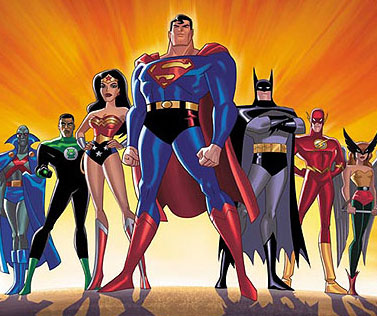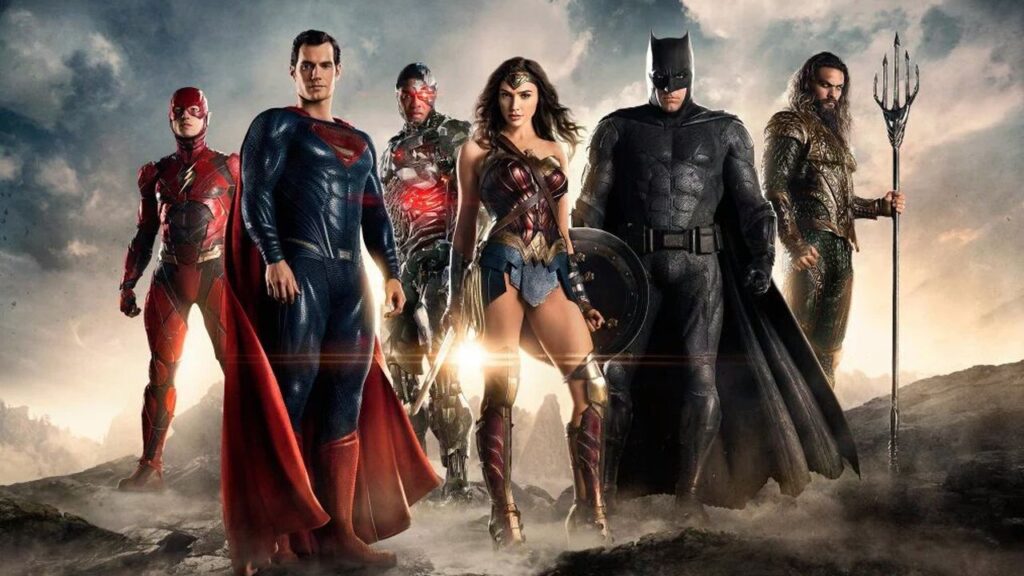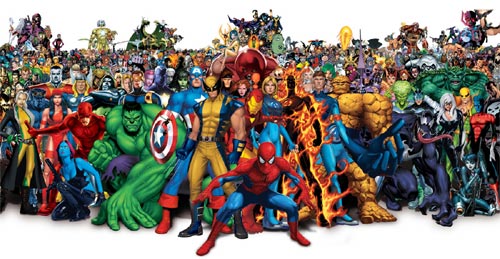Why did the superhero cross the road… to change their costume to better symbolize their abilities, motivations, and values! – ok… not the best joke.
But when it comes to comics and superhero stories, symbols and imagery are often just as important as the action and dialogue.
Superheroes have captivated audiences for generations, not only for their incredible powers and thrilling adventures but also for the rich symbolism they carry.
These iconic figures often represent more than meets the eye, as their stories convey deeper messages about society, morality, and the human condition
In this article, we’ll delve into the fascinating world of superhero symbolism and uncover the hidden meanings behind some of the most beloved comic book characters.
The Power of Symbolism in Superheroes
The Symbolism of Superhero Costumes

One of the most iconic symbols in comics is the superhero costume. These costumes are often symbolic of the character’s abilities, motivations, and values. For example, Superman’s blue and red costume with a red cape and the iconic “S” symbol on his chest represents his Kryptonian heritage and his role as a symbol of hope and justice. Similarly, Batman’s costume with a bat symbol on his chest represents his role as a symbol of fear for criminals and his connection to the animal kingdom. These costumes not only define the characters’ visual identity but also serve as a reflection of their personal journey and development.
The Symbolism of Superhero Logos: The Iconography of Superhero Branding
Superhero logos also play a significant role in comics as symbols of the character’s brand and identity. The iconic logos of characters such as Superman, Batman, and Spider-Man are instantly recognizable and serve as a shorthand for the character’s abilities, motivations, and values. These logos are often used in marketing and merchandise, further solidifying the character’s brand and identity in pop culture. In a sense, it’s like the superhero equivalent of getting a new logo for your business, as it’s all about rebranding and staying fresh.
The Symbolism of Superhero Powers: The Iconography of Superhero Abilities

The powers of superheroes are often symbolic of their abilities, motivations, and values. For example, Superman’s ability to fly, his strength, and his heat vision all symbolize his Kryptonian heritage and his role as a symbol of hope and justice. Similarly, Batman’s intellect, physical prowess, and use of gadgets represent his role as a symbol of fear for criminals and his connection to the animal kingdom. In essence, it’s like a superhero’s secret weapon: their powers are often a representation of who they are and what they stand for.
The Symbolism of Superhero Storytelling: The Iconography of Narrative Elements
Symbols in comics are not limited to costumes, logos, and powers but also extend to the use of imagery, colors, and themes in storytelling. For example, the recurring use of the color red in comics can symbolize blood, danger, or love. Similarly, themes such as power, responsibility, and redemption are often recurring in superhero stories and are used to add depth and meaning to the narrative. It’s like a secret code; the symbols used in comics tell a story within a story, enriching the reader’s experience and understanding of these iconic characters.
Archetypes and the Hero’s Journey
Superheroes often embody universal archetypes, such as the hero, the mentor, or the trickster. These archetypes tap into the collective unconscious, making superhero stories resonate with people across different cultures and time periods. The hero’s journey, a narrative template popularized by mythologist Joseph Campbell, is also a common framework in superhero stories, as it reflects the human experience of growth, struggle, and transformation.
Take the example of Spider-Man, a character who embodies the archetype of the “reluctant hero.” After gaining superpowers from a radioactive spider bite, Peter Parker initially uses his newfound abilities for selfish reasons. However, following the tragic death of his Uncle Ben, Peter realizes that “with great power comes great responsibility,” embracing his role as a hero and dedicating his life to fighting crime and protecting the innocent.
Symbolism in Iconic Superheroes and Their Stories

Batman: The Dark Knight as a Symbol of Justice and Fear
Batman, also known as the Dark Knight, is a prime example of a superhero who uses symbolism to his advantage. His bat motif not only represents his traumatic past but also serves as an instrument of fear and intimidation against criminals. By embracing the darkness and fear that once consumed him, Bruce Wayne transforms into a symbol of justice and hope for the citizens of Gotham City.
Moreover, the Bat-Signal is a powerful symbol of hope and protection for Gotham’s citizens. Whenever the signal illuminates the night sky, it signifies that Batman is on the case, striking fear into the hearts of criminals and reassuring the city that they are not alone in their fight against crime.
Wonder Woman: An Icon of Feminism and Empowerment
Wonder Woman, a warrior princess from the Amazonian island of Themyscira, embodies the ideals of strength, compassion, and equality. Created during World War II, she was initially a symbol of America’s fight for freedom and justice. However, over time, Wonder Woman has evolved into a feminist icon, representing the power and potential of women across the globe.
Her iconic costume, featuring the American flag’s colors and an eagle emblem, symbolizes her commitment to justice and freedom. Additionally, her Lasso of Truth, which forces those ensnared to tell the truth, signifies the importance of honesty and integrity.
Captain America: The Living Symbol of American Values
Captain America, the star-spangled super-soldier, was created during World War II as a symbol of American patriotism and values. His red, white, and blue uniform, adorned with the emblematic star and stripes, showcases his unwavering dedication to the United States and the ideals it represents.
Over the years, Captain America’s stories have explored themes of loyalty, courage, and sacrifice, reflecting the complexities of American society and its ongoing struggles with issues such as civil rights, government surveillance, and political corruption. By tackling these issues head-on, Captain America serves as a reminder of the importance of staying true to one’s values, even in the face of adversity.
The Evolution of Superhero Symbolism
From Golden Age to Modern Era: Shifting Cultural Contexts
The Golden Age of comic books (1938-1950) introduced many iconic superheroes, such as Superman, Batman, and Wonder Woman. These characters initially represented traditional values, such as patriotism, justice, and heroism. However, as society evolved, so did the themes and symbolism found in superhero stories.

During the Silver Age (1956-1970), comic book creators began to explore more complex storylines and introduce new characters that reflected the era’s social and political issues. The X-Men, for example, served as a metaphor for the Civil Rights Movement, with mutants facing discrimination and prejudice due to their unique abilities.
In the Modern Age of comic books (1985-present), superheroes have become even more nuanced, tackling contemporary issues such as mental health, environmentalism, and identity politics. Characters like Iron Man and Black Panther have emerged as powerful symbols of technology, innovation, and cultural pride, respectively.
The Impact of Cinematic Adaptations
The rise of superhero movies has significantly influenced the evolution of superhero symbolism. As these films reach a broader audience, the characters and their stories have been reimagined and updated to resonate with modern viewers.
For instance, the Marvel Cinematic Universe (MCU) has revitalized characters like Thor and the Guardians of the Galaxy, infusing them with new depth and complexity. These adaptations often emphasize themes of unity, teamwork, and diversity, showcasing the power of collaboration and inclusivity in the face of adversity.
Social Media and the Spread of Superhero Symbolism
Social media has further propelled the reach and impact of superhero symbolism. Platforms like Twitter, Instagram, and Facebook enable fans to engage with their favorite characters, share fan art, and discuss the deeper meanings behind their favorite stories.
This increased accessibility has allowed superhero symbolism to permeate mainstream culture, inspiring people from all walks of life to embrace the values and ideals embodied by these iconic characters.
Superhero Symbolism as a Catalyst for Change and Activism
Real-Life Inspirations and Role Models
Superhero symbolism has transcended the pages of comic books and the screens of theaters, inspiring real-life change and activism. The qualities embodied by these characters, such as resilience, courage, and empathy, have motivated individuals to become advocates for various causes.
For example, the #WakandaForever movement, which emerged after the release of Marvel’s Black Panther, highlighted the importance of cultural representation and inspired conversations about diversity, representation, and the power of storytelling.
Superheroes as Champions for Mental Health Awareness
The portrayal of superheroes dealing with mental health issues, such as PTSD and anxiety, has helped to destigmatize these topics and promote greater awareness and understanding. Characters like Iron Man and Jessica Jones serve as relatable examples of individuals who are not only battling external threats but also their internal demons.
These stories encourage readers and viewers to engage in open conversations about mental health and support those who may be struggling in their own lives.
Environmentalism and Superheroes
Some superheroes have become symbols of environmentalism and conservation efforts, using their powers and influence to fight against ecological threats. Characters like Swamp Thing, Captain Planet, and Poison Ivy have been used to raise awareness about the importance of preserving our planet and its natural resources.
These characters provide a powerful platform for communicating the urgency of environmental issues and inspiring readers and viewers to take action in their own lives.
Conclusion
Superhero symbolism has evolved over time, reflecting and shaping the cultural, social, and political contexts in which these stories are told. By engaging with the powerful symbols and themes found in superhero narratives, we can better understand the values that unite us and the challenges we must overcome.
As we continue to explore the depths of superhero symbolism, let us remember the lessons these characters teach us about resilience, empathy, and the importance of standing up for what we believe in. Share your thoughts on the impact of superhero symbolism in the comments below, and join us in celebrating the power of these incredible icons.
#SuperheroSymbolism







